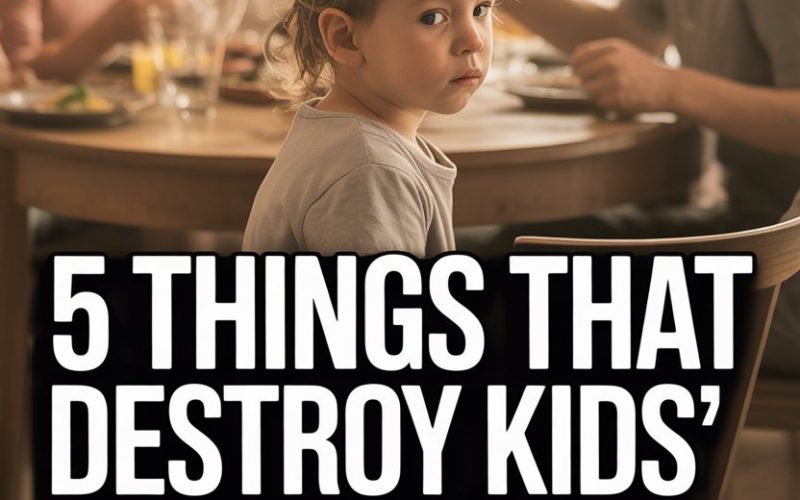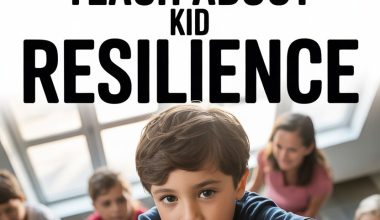Raising emotionally intelligent kids sounds so lovely on paper—like one of those achievable, Pinterest-worthy parenting goals. And then life happens.
Suddenly, your toddler is weeping over the way you peeled their banana, your pre-teen is giving you the silent treatment, and your own emotional intelligence is somewhere between a hedgehog and a garden rake.
Emotional intelligence (EQ) is a genuine game-changer for children’s futures—how they make friends, solve problems, and handle life’s wobbly bits.
But before we can nurture it, we need to stop accidentally bulldozing it.
Here are five common pitfalls that can trip up even the most well-intentioned parents.
1. Dismissing or Minimising Big Feelings
The impulse to wave away a child’s distress is powerful.
Maybe you’ve heard yourself saying “You’re fine!” or “There’s nothing to be upset about!” when your child starts sobbing because you gave them the red cup. Again.
Sure, spilling juice or missing out on screen time isn’t the end of the world—for you. For a five-year-old, it genuinely feels catastrophic.
When adults routinely brush off these experiences, kids learn their feelings aren’t valid, or that strong emotions are something to be hidden.
The result? They stop expressing themselves, or worse, bottle things up until they explode (usually at a family gathering).
Child psychologists agree: validation is the magic ingredient in teaching emotional regulation. Instead of “Don’t cry,” try “That really upset you, didn’t it?”
It doesn’t mean agreeing with every meltdown, just offering a little empathy.
Practical tip: When your child is teetering on the edge, get down to their level—literally. Eye contact, a gentle hand on the shoulder, and a simple, “I see you’re angry” can work wonders.
Sometimes, that’s all they need before they’re ready to move on (or at least resume breathing through their nose).
2. Modelling Poor Emotional Self-Regulation
Ever found yourself barking at the kids to “CALM DOWN!” while you’re red-faced and flapping your arms like a seagull? Welcome to the club.
Children are emotional sponges. They study us like it’s their job (unpaid, but with great benefits), copying every sigh, eye roll, and less-than-ideal word uttered when you stub your toe.
If we show them that anger means yelling, or sadness means sulking, they’ll file that away for future use—usually in the supermarket.
Research from Harvard shows that kids develop emotional intelligence by watching their caregivers handle big feelings. That means we need to model what we want to see—even if our own inner child wants to scream into a pillow.
Practical tip: When you do lose it (and you will), talk about it afterward. “I got really frustrated earlier and yelled. Next time, I’ll try taking deep breaths first. I’m sorry if I scared you.”
Kids don’t need perfect parents—they need real ones who can own their emotions and recover gracefully.
3. Overprotection and Micromanaging
Nothing says “I trust you, darling” quite like following your child around with hand sanitizer and a helmet. It’s natural to want to protect our offspring—it’s hardwired.
But when we hover, swoop in at the first sign of distress, or solve every problem for them, we rob them of the chance to build confidence and resilience.
Kids need safe opportunities to make mistakes, muddle through arguments, and even (gasp) fail. According to child development experts, a bit of struggle is vital for emotional growth.
Overprotected kids often freeze when faced with tough situations, not knowing how to handle anything trickier than a mild inconvenience.
Practical tip: Pause before rescuing. If your child is struggling to zip their jumper or sort out a squabble with a friend, take a beat. Offer guidance if needed, but let them wrestle with the challenge.
The pride on their face when they master it? Worth every ounce of restraint.
4. Punishing Emotions Instead of Behaviours
Ever caught yourself saying “Stop being so dramatic!” or “I’ll give you something to cry about!” (No shame—many of us grew up with similar catchphrases.)
The problem? Kids start to believe their feelings are the enemy.
It’s crucial to draw a distinction between feelings (which are always OK), and behaviours (which sometimes need adjustment).
A child who’s angry about bedtime isn’t doing anything wrong by feeling that way. Hurling the remote across the room? That’s another story.
Pediatricians recommend acknowledging the feeling, then addressing the behaviour. Try: “It’s okay to be mad, but it’s not okay to throw things. Can you show me with your words instead?”
Practical tip: Create a feelings chart or cue cards with faces. When emotions run high, help your child name what they’re feeling.
Once the emotion is named, it loses some of its power—and your child has a better shot at expressing themselves in a way that doesn’t involve household projectiles.
5. Shaming and Humiliation
Few things torch a child’s self-worth faster than embarrassment at the hands of someone they love.
Shaming can be subtle—a sigh, an eye roll, a sarcastic “Nice job, genius”—or it can be public, like telling off your child in front of their friends.
The result? Kids don’t stop making mistakes; they just stop coming to you when they do. Research shows that shame triggers anxiety and withdrawal, and can actually lower emotional intelligence over time.
Practical tip: Separate the child from their actions. Instead of “You’re so careless,” try “That was a careless mistake—it happens to everyone.” At home, focus on private corrections, and when possible, acknowledge effort over results.
Everyone messes up; your child needs to know home is the safest place to land.
Raising Emotionally Savvy Kids Is Worth the Mess
No one gets this parenting gig right all the time. You’ll snap, you’ll sigh, you’ll wish you’d handled that tantrum differently.
The good news? Emotional intelligence isn’t built in a day—or ruined by one bad morning.
Think of each day as another chance to model, validate, and (when in doubt) hug it out.
Kids don’t need perfection. They need parents who try, who apologize, and who show them that feelings are nothing to fear—even the really weird ones.
Tomorrow is another chance to give it a go. And who knows? With enough practice, your child might one day thank you—with words, not just an eye roll.
Now that’s emotional intelligence.





